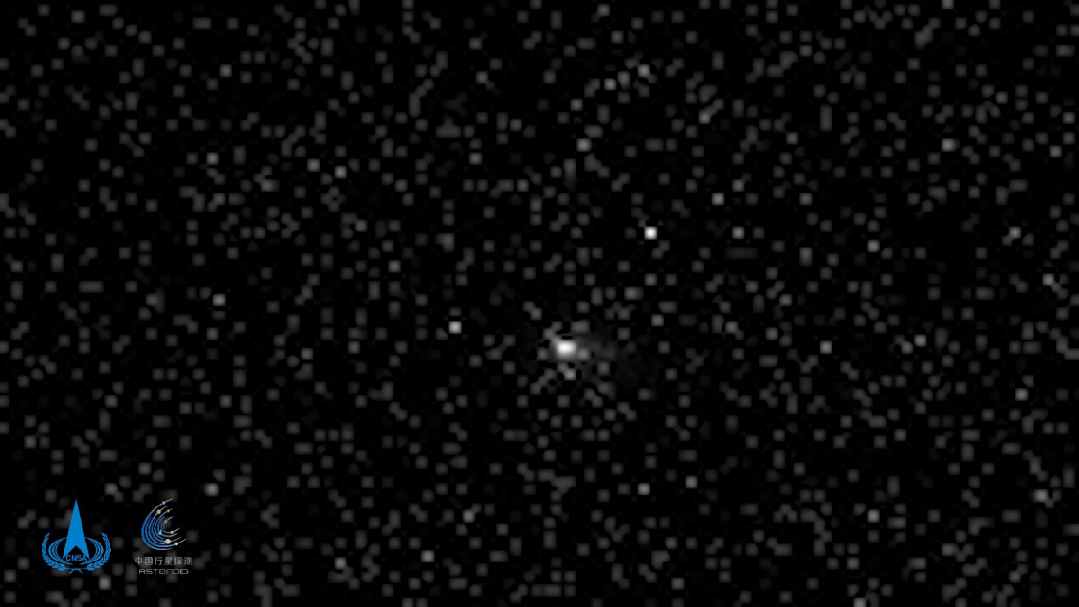In an awesome space-based surprise, China’s Tianwen-1 orbiter has sent back intriguing photos of interstellar comet 3I/ATLAS, taken from the orbit of Mars.
For those just joining the story of our interstellar visitor, on July 1 this year astronomers at the Asteroid Terrestrial-impact Last Alert System (ATLAS) spotted an object moving through the Solar System at around 58 kilometers per second (36 miles per second). With a lot of telescopes turned towards the object, it was soon determined to be a comet, and a pretty interesting one at that.
Now designated 3I/ATLAS, the object is known to be an interstellar comet, which may be a 10-billion-year-old time capsule from another age of the universe. Astronomers are keen to study its properties, which could tell us about the environment it came from, and the effect of the interstellar medium on cometary objects. Besides that, it is only our third confirmed interstellar object, after 1I/ʻOumuamua and 2I/Borisov.
Unfortunately, for a while anyway, the object was out of view of Earth telescopes, as it traveled behind the Sun from our perspective. During that time, it was imaged by the European Space Agency’s (ESA) spacecraft Mars Express and ExoMars Trace Gas Orbiter (TGO) from the orbit of Mars.
Now, in a small and pretty tasty surprise, China’s Tianwen-1 orbiter, which went into orbit around the Red Planet in February 2021, has sent back its own images of the interstellar comet.

The comet can be seen moving in this animated view of several observations.
Image credit: CNSA
These images, as you might imagine, are a pretty stunning technical achievement. The cameras onboard Tianwen-1 were originally designed to photograph a well-lit surface of a planet, not a distant and relatively small interstellar comet.
“This was the first attempt to photograph such a distant and relatively dim target (10,000 to 100,000 times dimmer than targets on the Martian surface). Through collaborative efforts of the Tianwen-1 team, combining the orbital characteristics, brightness features, geometric dimensions of Atlas orbit, and the technical capabilities of the orbiter’s scientific payloads, repeated simulations and calculations were conducted to complete the feasibility assessment of the observation mission,” the China National Space Administration (CNSA) explained in a statement.
“The use of the high-resolution camera carried by the Tianwen-1 orbiter was determined, and key imaging strategies were carefully designed, ultimately leading to the successful completion of the observation. This mission maximized the imaging capabilities of the high-resolution camera, specifically targeting the faint target.”

An image of interstellar object 3I/ATLAS photographed by China’s Mars orbiter.
Image credit: CNSA
Seen in the images are the comet’s distinctive traits, including its nucleus – the central icy and rocky part of a comet – and its coma, a cloud of gas and dust which appears as a comet’s surface heats and its volatile ices vaporize. There are plenty of interesting puzzles astronomers have observed of this comet, including the development of a rare anti-tail and an unusual chemical makeup.
Most recently, the object has apparently changed course slightly and may have lost a significant amount of mass, though these are more signs that the object is a comet outgassing and experiencing a resulting change in acceleration, rather than an alien mothership, a hypothesis rejected by scientists from NASA and the Search for Extraterrestrial Intelligence (SETI) as unnecessary, given the comet’s cometary behavior.
“The images clearly show the comet’s distinctive features, consisting of a nucleus and a surrounding coma, with a diameter reaching several thousand kilometers,” CNSA adds. “Based on this observational data, researchers are conducting further in-depth studies of ATLAS.”
Now that 3I/ATLAS is back from behind the Sun, Earth’s telescopes are pointing at it once again, and hopefully we will learn more about this intriguing object and how it coped with its encounter with the Sun, the first approach to a star it may have had in billions of years. We may soon also have new observations of the comet courtesy of ESA’s JUICE orbiter on its way to Jupiter. Isn’t science wonderful?
Source Link: Chinese Spacecraft Around Mars Sends Back Intriguing Gif Of Interstellar Comet 3I/ATLAS